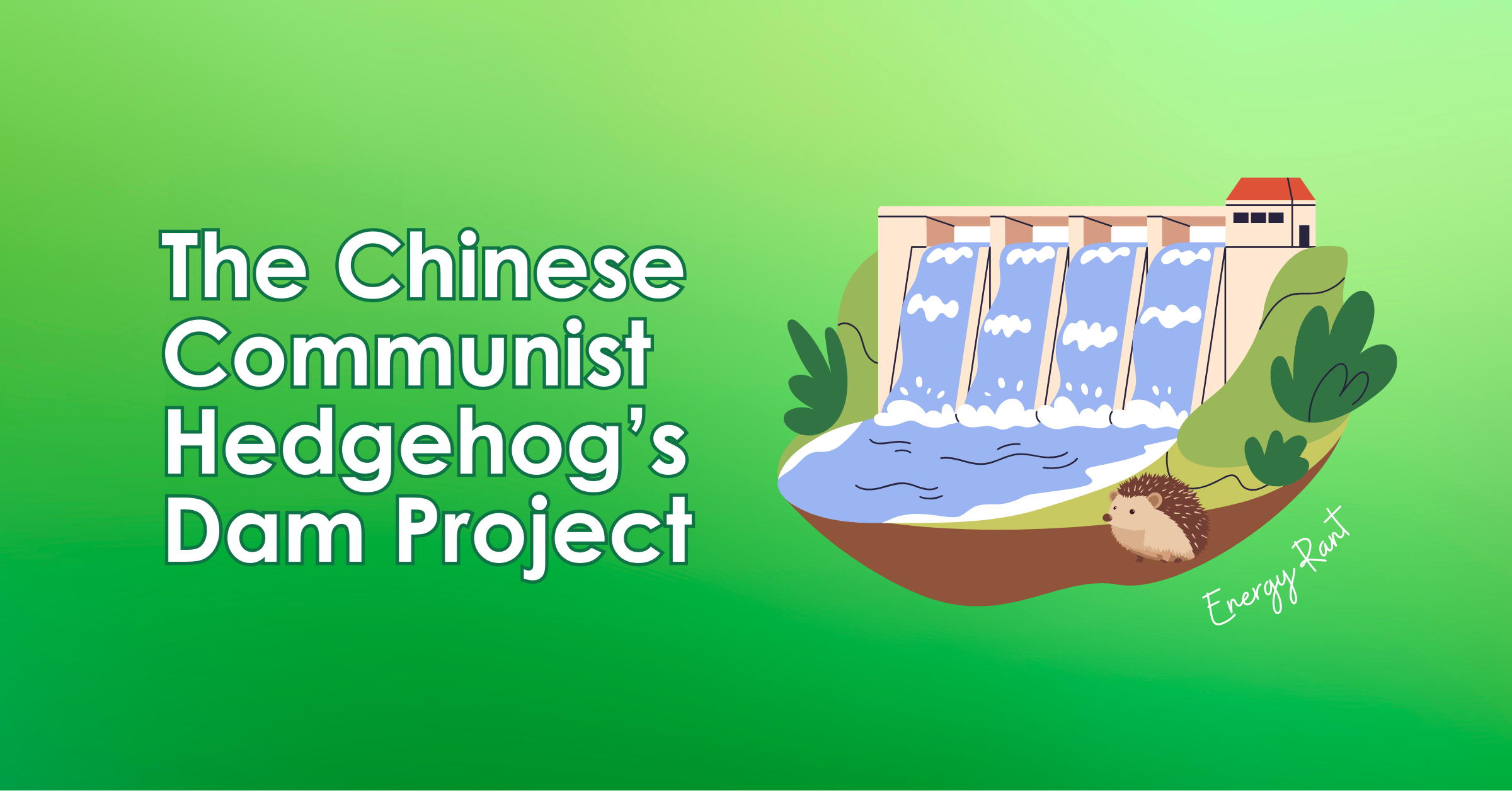
Doing a minor cleanup on personal transportation this week, here in the beloved City of La Crosse, I have one perennial gripe: road construction that takes an entire season. The saying goes, there are two seasons: winter and construction. Winter lasts three months, December through February, and I’ve come to love winter because it guarantees the end of excessive lane closures, in both number and duration. For example, there is a four-lane thoroughfare, one of only three that move north to south across the city, which is boxed between the river and the bluffs. It’s long and narrow. They close two lanes, but the two open lanes both go in one direction – north. Who does that? What chowderhead designed this construction project? If climate change kills winters, our three-month vacation from road construction goes with it. This is my greatest fear!
Long-Term Assets
Speaking of infrastructure projects, a few weeks ago, with Sam’s help, I asked critical questions and provided a detailed analysis for the net present value of an 80-year asset known as a nuclear power plant. I compared that type of asset to two major power-generating facilities with similar lifespans: the Hoover and Robert Moses Niagara hydropower facilities. They have generating capacities of 2,080 MW and 2,675 MW, respectively, about two or three nuclear power plants’ worth of capacity each.
Enter the Chinese Communist Party, an evil regime. Not to be confused with the Chinese people, the CCP consists of only 99 million in a country of 1.4 billion, only 7% of the population. But I’ll tell you, they don’t mess around. Although Donald Trump thinks “big” (I read his book, Think Big, years ago – some impressive stuff) and has an unprecedented impulse to declare victory, whatever the facts, he doesn’t hold a candle to Xi and the CCP for infrastructure projects.
Incidentally, what are the roots of the candle idiom? It traces to the fact that an apprentice cannot hold the candle to give light so that the master artisan can do their thing. It dates to the pre-electricity era.
A Mega Dam
What are the ChiComs up to at this moment? A hydro power project that drills from the Tibetan Plateau to Northeastern India, with a vertical of “nearly 2 vertical miles” (7,800 feet from what I see in Figure 1). That vertical drop equals about 3,400 psi, about 100 times tire pressure. It’s about twice the pressure any known submarine can withstand. Although estimates vary widely, I can say I’ve been on a submarine diving to over 1,000 feet with audible creeking and popping from external pressure.
To be clear, the system won’t be designed for this pressure. Five cascading generating stations will be installed as the river makes its way to the Indian Ocean. The purpose of the pressure discussion is to express the incredible potential energy from the project’s elevation.
Figure 1 Yarlung Tsangpo Project
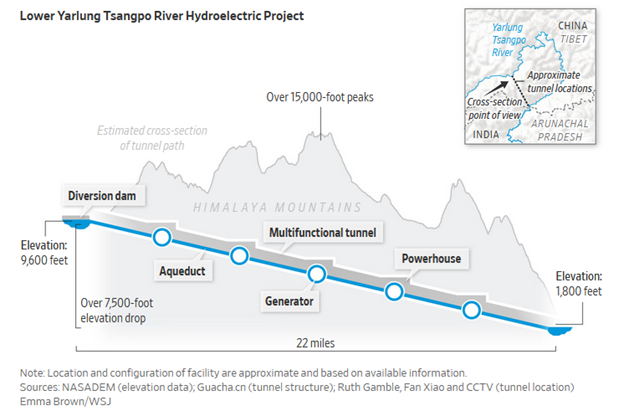 The volumetric/vertical result would be a truly unprecedented 65 GW of power generation, completely dwarfing the power-generating capacity of any project in the United States (Figure 2). The Hoover Dam is literally a toy (~1:32 scale) by comparison (Figure 3).
The volumetric/vertical result would be a truly unprecedented 65 GW of power generation, completely dwarfing the power-generating capacity of any project in the United States (Figure 2). The Hoover Dam is literally a toy (~1:32 scale) by comparison (Figure 3).
Figure 2 China’s Hydropower Dominance
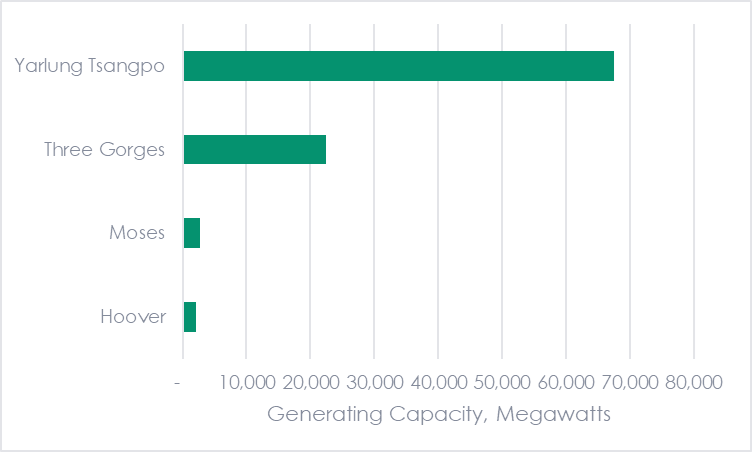 Figure 3 Hoover Dam Scaled to the Yarlung Tsangpo Project
Figure 3 Hoover Dam Scaled to the Yarlung Tsangpo Project
 Price Tags and Overruns of Mega Projects
Price Tags and Overruns of Mega Projects
The project’s price tag is $167 billion, roughly $2,500 per kW. Since this hasn’t been done before, let’s get real. The price will be at least double that, around $5,000 per kW.
Over 91% of megaprojects go over budget. Run-of-the-mill dams like Hoover and Moses average 90% over budget. But then, back in the day, with the timelines under which those projects were built, they were probably built closer to budget. However, given the exceedingly challenging nature of tunneling with the Yarlung Tsangpo project, it may be closer to 300% over budget. Yeah. I’ll go with a minimum of 300% over budget, considering the Three Gorges project was 200% over budget.
Table 1 summarizes a list of infamous cost overruns on megaprojects. Tunnels are especially challenging, and especially^2 challenging considering drilling in the quake-prone Himalayan canyon. A 300% overrun would put it in the pricing range of a nuclear power plant on a per-MW basis (about $10 million/MW). See Table 2.
However, nuclear power plants have average capacity factors of over 90% versus a projected capacity factor of 50% for hydro projects, including Yarlung’s estimated 300 million megawatt-hour production.
Table 1 Mega Project Cost Overruns
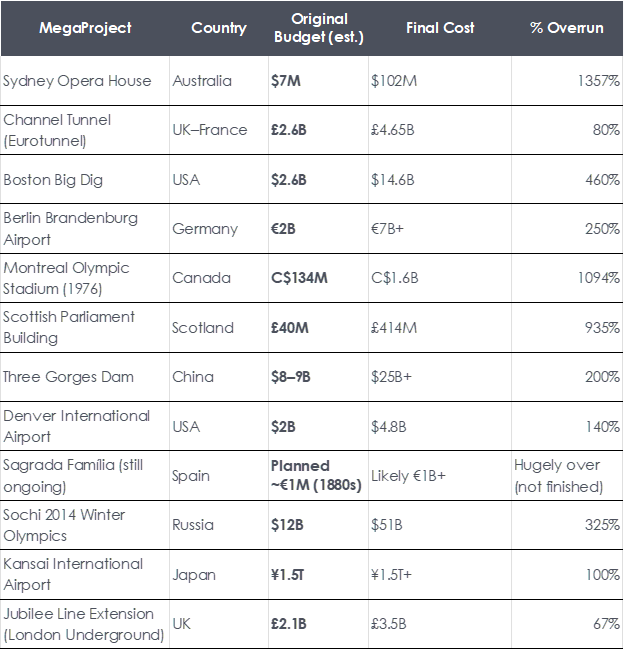 Table 2 Typical First Cost and Capacity Factor by Power Plant Type
Table 2 Typical First Cost and Capacity Factor by Power Plant Type
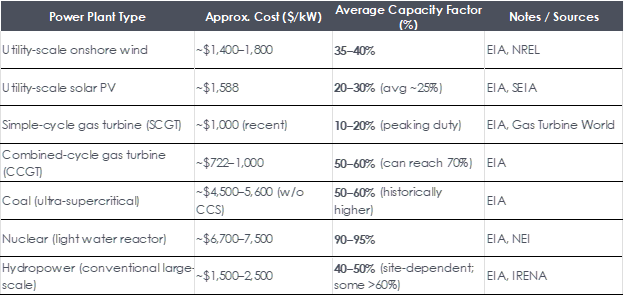 Xi and his merry band of ChiComs are going big(!) with the Yarlung Tsangpo project. How will it go? Stick around to find out. I’ve been writing the Rant for 15 years. It may take another 15 years to see the completion of the Yarlung Tsangpo dam. That’s the difference between China and the United States. One is in it for the long haul, and the other, not as much.
Xi and his merry band of ChiComs are going big(!) with the Yarlung Tsangpo project. How will it go? Stick around to find out. I’ve been writing the Rant for 15 years. It may take another 15 years to see the completion of the Yarlung Tsangpo dam. That’s the difference between China and the United States. One is in it for the long haul, and the other, not as much.
China wins the hedgehog competition for grinding persistence. Chinese leadership clearly follows the hedgehog path, which is an advantage for decades-long dictatorships. In the U.S., there is a fight for votes every four years, followed by gyrations from one side to the other, mostly dismantling the other’s policy. Conversely, the Three Gorges Dam was first proposed in 1919, started construction in 1992, and was completed in 2009. In that window, the U.S. could start and cancel pipelines and power plants by the hundreds or even thousands.

